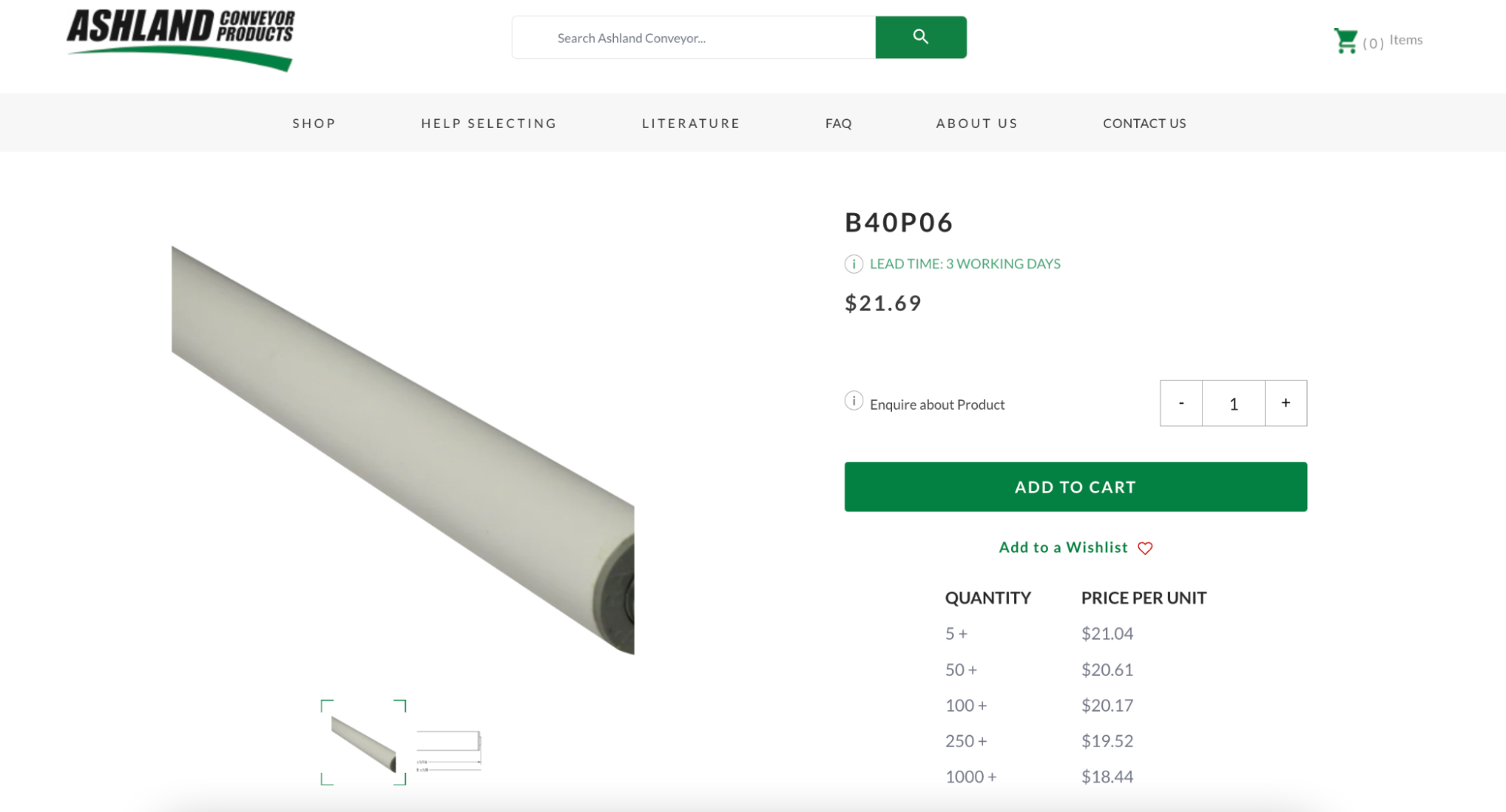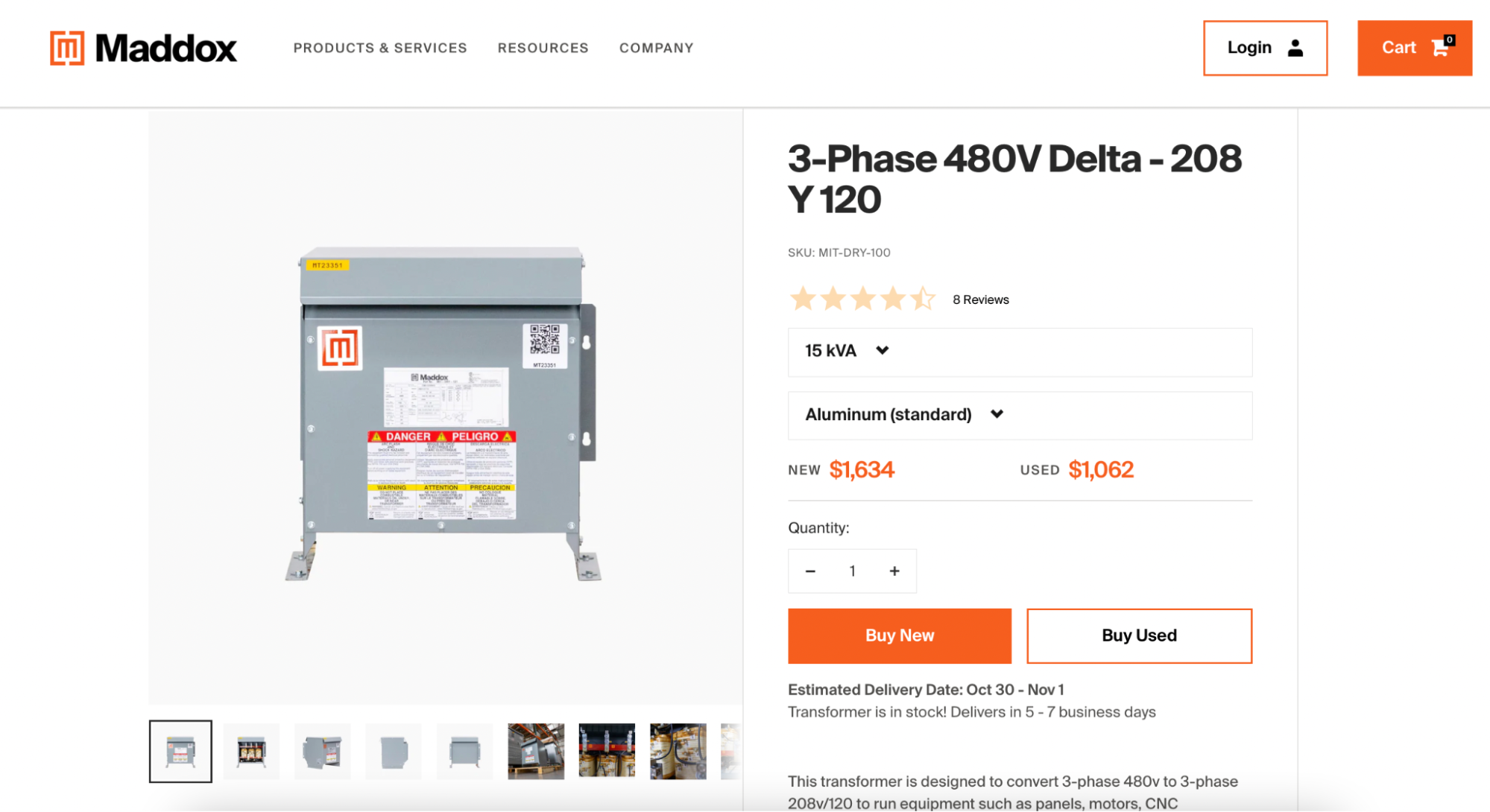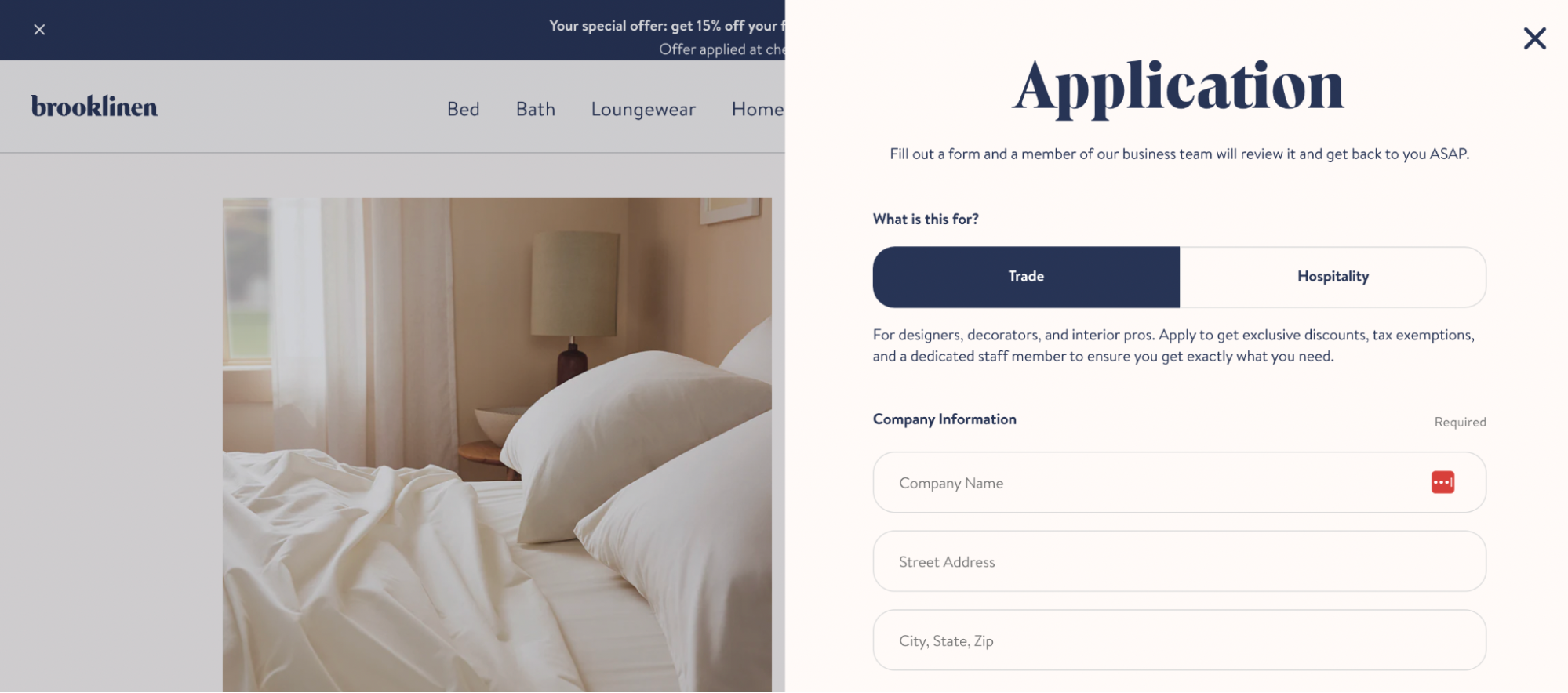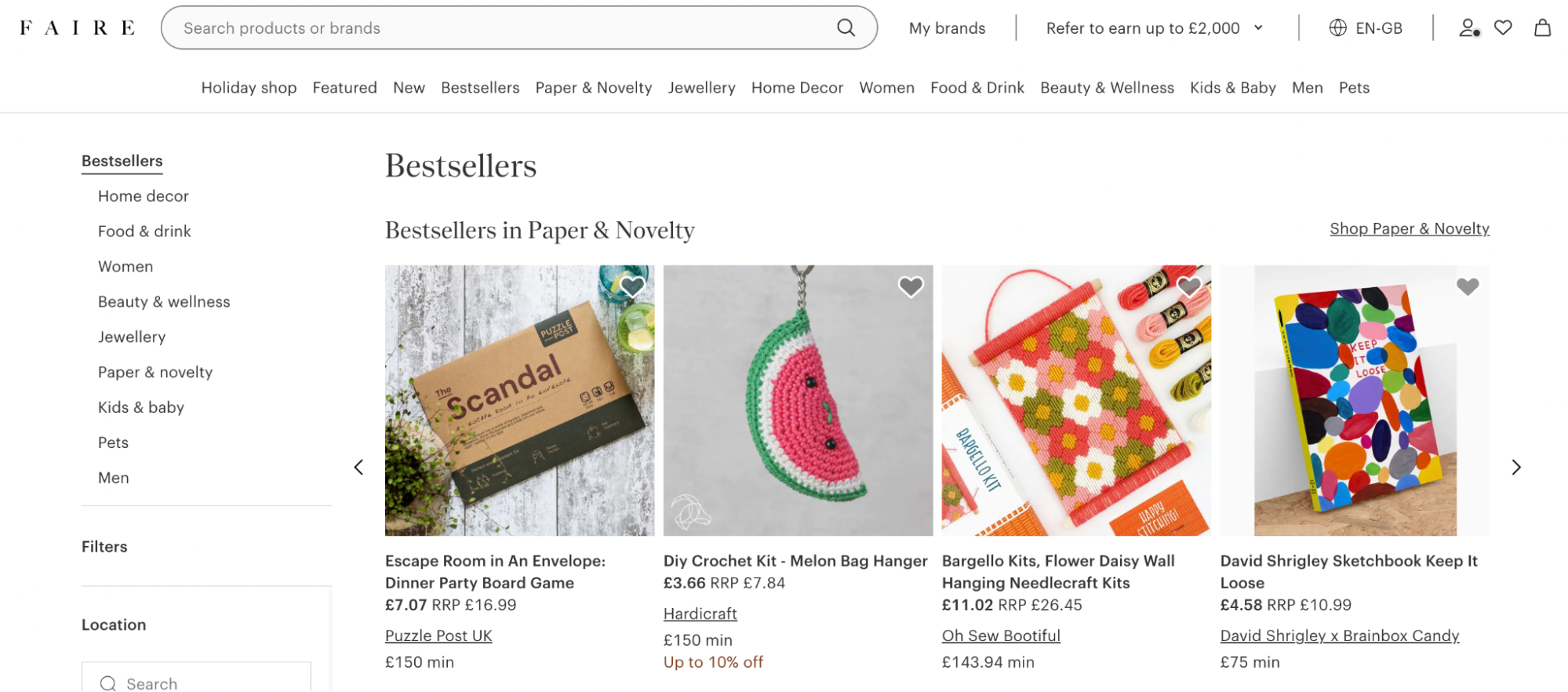Wholesale distribution is a lucrative business opportunity: instead of selling directly to the end consumer, you can sell products to other retailers in bulk.
But before choosing a wholesale ecommerce business model, there are lots of things to consider. Who will be selling your products? Can you handle the volume? What will your margins look like? These questions can be overwhelming, especially for younger businesses.
This guide shares how to become a wholesale distributor in eight steps, alongside tips on how to make your business-to-business (B2B) operations run smoothly. What is a wholesale distributor?
A wholesale distributor is a business that creates its own products or buys products from a manufacturer. The distributor acts as the middleman and resells products to other retailers in bulk and at a lower cost than the recommended retail price (RRP).
What is a wholesale distributor?
A wholesale distributor is a business that creates its own products or buys products from a manufacturer. The distributor acts as the middleman and resells products to other retailers in bulk and at a lower cost than the recommended retail price (RRP).
How to become a wholesale distributor in 8 steps
1. Know who you’re distributing to
Much like any business model, a successful wholesale distribution company has a business plan that outlines its target market.
As part of your market research, figure out whether you could handle sourcing products to a large retailer like a department store, or whether you’re looking for more boutique sellers with small businesses. You’ll not only need to consider volume, but also any rules or requirements that that retailer has for their wholesale suppliers.
Larger retailers often have strict rules around product sales—and who takes the hit if there are losses. This can make working with chain stores and department stores difficult and expensive.
If you’re just starting out as a wholesale distributor, partnering with smaller retailers may be a better choice. You can learn as you go with less risk than jumping right in with a large seller.
Similarly, consider which kind of retail stores fit your product best. Would it do best in a more general store, or do you sell a very niche item that would do better in a more specialized store? You need to consider this when reaching out to retailers—and when you brand your wholesale side offerings to ensure you’re reaching the right stores.
2. Choose the best products for wholesale
Are your products something other retailers would be interested in selling to their customer base—something they could work into their existing product selections? Is your product line cohesive enough to attract retailers? These are all questions you should be asking yourself when considering wholesale distribution.
Once you’ve chosen wholesale products, consider what makes them stand out and use that information in your sales pitch when talking to retailers or listing your products on a wholesale marketplace.
The benefits of your products should be clearly listed on your site and a focus of your sales. Perhaps you use a particular method to make your product, or maybe you source all the materials locally—or somewhere unique and exotic. These are all details that you should tell retailers in your pitch. Let them know what makes your products worth investing in.
3. Get a wholesale license and other permits
Wholesale distributors need a specialized business license to resell goods to other merchants. A reseller license, which costs $6,500 on average, proves you’re a credible distributor that sells legitimate products.
You’ll need this type of license in every state your wholesale business operates. If you’re based in California but serve wholesale customers in Tennessee, for example, you’ll need a reseller’s permit in both states.
To apply for a wholesale license, find the online application form—usually from your state’s tax or revenue office. You’ll need your employer identification number (EIN) and the business’ sales tax ID. Most applications are approved within a few weeks.
4. Determine wholesale prices
Wholesale pricing can be a big challenge that confuses many new distributors. As a distributor, you sell quality products at cheaper prices than RRP—but there still needs to be some profit left in the pot to make it a worthwhile business.
Consider if your margins are good enough to offer a proper discount to someone who purchases wholesale. Retailers want to make money from your products as well, so a 10% discount won’t be enough for them to buy your products. On the other side, you also need to make sure you aren’t undercharging. You don’t want to lose money on your wholesale orders, otherwise it won’t be sustainable.
Remember: Businesses that buy wholesale usually pay a few weeks after receiving their products, since this gives them enough time to increase sales and pay for the inventory. When establishing a wholesale distribution business, decide how long you’re willing to wait for payment. Net 30 and net 60—as in, 30 or 60 days needed from the time an invoice is sent to the time payment is received—are the most common payment terms for distributors.
5. Set minimum order quantities
Wholesale distributors make money by selling products in bulk. Products are much lower in price than if you were selling them directly to the consumer, so you’ll need some restrictions in place to make sure that your distribution business is profitable.
The last thing you want is to sell five products that actually end up costing you money after taxes, shipping, and production fees are taken into account.
A minimum order quantity (MOQ) describes the smallest number of units a wholesale customer can order. They help keep your wholesale distribution business profitable, since customers can only order items in bulk.
Consider what businesses you’re targeting and what quantities they would likely wish to order. If you serve several types of retailer, you could offer tiered pricing for different company sizes and order volumes.
Ashland Conveyor, for example, has a different price per unit depending on how many units a retailer buys. Smaller quantities are the most expensive, which incentivizes potential customers to buy more.

Ashland Conveyor incentives higher value orders with tiered wholesale pricing.
6. Shoot product stock images
Wholesale distributors often don’t consider product images, especially if they’re also selling directly to the consumer.
The photos you use on your DTC website might not work for B2B. Usually, you’ll want a more plain image on a white background, showing the product exactly the way it will look without anything else in the way.
You can also have pictures showing your products in flat lays or on a model, but an image of the product alone works best as the item’s main image.
Maddox Industrial Transformer, for example, shows a photo of its transformer as the main image. Supporting images and videos show different angles of the transformer and how it might be used in a warehouse.

Maddox’s product page for a wholesale item.
7. Create packaging and promotional materials
As a merchant wholesale distributor, you don’t have much control over how your products are marketed by a retailer. Promotional materials, however, give the retailer some guardrails in the form of premade templates that communicate your product’s features and benefits the way you’d prefer.
If your business is currently online but you’re looking to sell to retailers with brick-and-mortar stores, consider how they should display your products in their store. You could provide special shelving with your brand on it, retail signage, or stickers for the store.
You could also prepare online promotional materials for retailers to post about your products on social media platforms. That could be:
Templates for Instagram Stories
Social media advertisements
Customer education videos
When you’re preparing promotional materials, consider how you’re packaging large orders, including things that may need to be added to your shipments—like inserts, in-box promo, and ingredients lists. These will need to be made in advance and available to your fulfillment team prior to receiving orders.
Similarly, think about your response to questions from retailers about white labeling. If you have a product that a retailer wants to place their own brand and logo on, would you be willing to offer a white labeling service? It could be a great way to boost your wholesale sales if you have the means to customize products at scale.
8. Build an online wholesale store
The traditional way to sell wholesale products used to be very complex and manual. Now, Shopify Plus merchants can sell wholesale from the same ecommerce platform that powers their online storefront—giving B2B the DTC experience.
The B2B ecommerce platform allows you to:
Create customer profiles for B2B buyers
Hide wholesale pricing behind account logins
Set MOQs for wholesale products
Assign payment terms for B2B orders
Manage tax exemptions, currencies, and localized wholesale storefronts
Advertise wholesale distribution on your DTC website and tell potential retailers to reach out to you if they are interested. Brooklinen, for example, has this landing page to describe the benefits of buying its wholesale products, complete with an application form to become a wholesale customer.
“It’s been great to have the B2B functionality in the Shopify Admin, so we can use the functionality we’re familiar with to spin up our B2B site,” says Elizabeth Bell, director of product management at Brooklinen. “We can have a site that looks and feels very similar to our DTC site but have it be focused on business to business.”

Brooklinen’s trade application.
Three tips for wholesale distributors
Once your wholesale distribution business is up and running, here are three tips to grow it.
Build a team to handle volume
Packaging and shipping large orders can be quite the undertaking—and you need to be prepared for it.
If you’re currently the person who does all the packaging, consider hiring a fulfillment team as your wholesale distribution business grows. You could hire someone to help you package and ship orders or outsource the entire process to an ecommerce fulfillment service.
Here are some questions to help you decide whether you need extra help:
Do you only produce in small quantities?
Could you increase production if needed?
Do you have the warehouse space to hold these increased quantities until they sell?
How will you distribute these large orders?
Warehousing is also something to consider as you scale your wholesale distribution business—as you take on more retailers, you’ll need more products and more warehouse space. A third-party logistics provider can offer more space when you need it.
The dropshipping business model takes the distribution challenge off your shoulders entirely. Dropshipping is when a retailer sells your products without holding inventory, and you ship them out on their behalf, directly to the end customer. You might give a smaller discount in these cases, since you’re handling the logistics, but you should consider offering dropshipping if you feel you could handle those additional orders.
Establish relationships with suppliers and retailers
Once you’ve made the first sale with a new wholesale customer, your work doesn’t stop there. Distributors have a lot more direct contact with the buyer and more follow-ups than with a DTC business.
Follow up with retail businesses to see whether they liked the products, how their customers responded to them, and whether there’s anything else that the customer needs. You could also show them any new products you’ll be offering to get them excited about upcoming wholesale products.
It’s much easier to generate sales from existing customers than from new ones. Plus, retailers that have already made an order are also more likely to place large orders. They already trust you and your products—and in most cases, will have gotten positive feedback about them from their own customers.
Join a wholesale marketplace
As a wholesale distributor, you don’t have to put all of your eggs in one basket. Much like DTC business owners who might sell through multiple sales channels (like their online store, Facebook, and Instagram Shops), you can drum up new business by listing your products on wholesale marketplaces or attending trade shows.
A wholesale marketplace is an online platform where buyers and sellers can purchase wholesale items. Popular directories include:
Faire
Worldwide Brands
Alibaba
The downside to wholesale marketplaces is that they take a cut of sales that happen through the platform. To save profits, most distributors use wholesale marketplaces to reach new customers but convince retailers to place ongoing orders through their own wholesale website.

Faire’s bestselling wholesale products.
Benefits of becoming a wholesale distributor
If you’re thinking about starting this type of business, here are the biggest advantages of becoming a wholesale distributor:
Increases your reach. DTC brands have the pressure of finding customers—but when you offer wholesale distribution, retailers can do the hard work for you. It’s their job to promote, market, and sell your products in their own stores.
Less pressure on customer acquisition. Instead of finding end consumers who might only buy your products once, wholesale customers tend to make repeat bulk orders. You’ll need much fewer customers to make a profitable business out of wholesale distribution.
Simplified order fulfillment. Because wholesale customers buy products in bulk, fewer orders leave your warehouse. This makes the logistics process easier than DTC.
Wholesale distribution challenges
Running a successful wholesale business does have its advantages, but there are some downsides to consider when evaluating this model:
Shipping can be expensive. Retailers buy wholesale products in bulk, so it’s harder (and expensive) to pick, pack, and ship large orders.
Limited control over product display and marketing. Retail distributors can choose how they present wholesale products to their own customers. Keep your brand image consistent by setting a minimum suggested retail price (MSRP) and providing marketing materials such as social media posts and retail signage.
Lower product margins. Wholesale distributors sell products at a lower price than RRP, leaving small profit margins (between 30% and 50%, on average). Make your wholesale distribution channel more profitable by setting minimum order quantities.
Next steps: how to become a wholesale distributor
The decision to break into wholesale can be incredibly daunting for a business. But it’s a business model worth considering if you want to expand awareness of your own product or focus on lower quantity, higher quality orders.
Follow the steps above to start wholesaling and find your first few customers. From configuring wholesale prices to setting minimum order quantities, you can do it all with B2B on Shopify.
How to become a wholesale distributor FAQ
How do I become a wholesale distributor for my product?
Define your ideal customer.
Choose wholesale products.
Get a wholesale license.
Set prices for wholesale products.
Choose minimum order quantities.
Upload stock product images.
Design promotional materials.
Create a wholesale storefront.
How do wholesale distributors make money?
Wholesale distributors sell products to other retailers in bulk. The profit margin on each unit is small, but they make money by selling products in higher quantities.
Is being a wholesaler profitable?
Wholesale is a profitable business opportunity because although you’re selling goods at a lower cost, you’re selling products in much higher quantities than you would directly to the end consumer.





